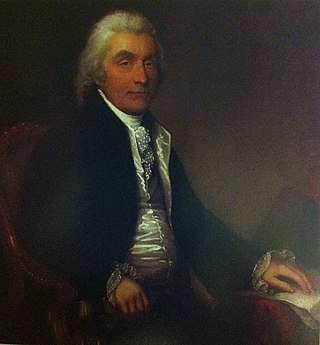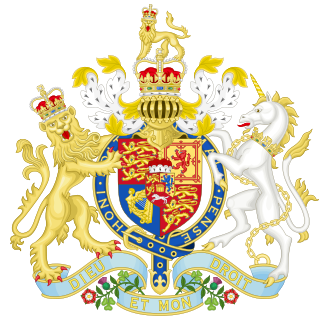The 38th Regiment of Foot was an infantry regiment of the British Army, raised in 1705. Under the Childers Reforms it amalgamated with the 80th Regiment of Foot to form the South Staffordshire Regiment in 1881.
The 80th Regiment of Foot (Staffordshire Volunteers) was an infantry regiment of the British Army, raised in 1793. Under the Childers Reforms it amalgamated with the 38th (1st Staffordshire) Regiment of Foot to form the South Staffordshire Regiment in 1881.
The 82nd Regiment of Foot (Prince of Wales's Volunteers) was an infantry regiment of the British Army, raised in 1793. Under the Childers Reforms it amalgamated with the 40th (the 2nd Somersetshire) Regiment of Foot to form the Prince of Wales's Volunteers (South Lancashire Regiment) in 1881.
The 111th Regiment of Foot was an infantry regiment of the British Army from 1794 to 1796. It was formed on 30 May 1794 and disbanded in February 1796.
The 109th (Aberdeenshire) Regiment of Foot was an infantry regiment of the British Army from 1794 to 1795. Raised by Alexander Leith Hay for service in the French Revolutionary Wars the regiment was briefly deployed in Jersey before it was disbanded in England and its men sent to reinforce the 53rd (Shropshire) Regiment of Foot. The disbandment was controversial as Leith-Hay believed it contravened an assurance given to him in his original letter of service to raise the regiment.
The 102nd Regiment of Foot was a short-lived regiment of the British Army raised in 1793 and disbanded in 1795.

The Royal Nova Scotia Regiment was a battalion of infantry raised in 1793 to defend British interests in the colony of Nova Scotia during the Wars of the French Revolution. The unit was commanded by Colonel John Wentworth, the lieutenant-governor of the colony, throughout its existence. The Royal Nova Scotia Regiment (RNSR) had an undistinguished history through most of its existence, and saw very limited action, mostly in the role of marines, but did play an important role in the defense of Nova Scotia during these wars.
The 99th Regiment of Foot was an infantry regiment of the British Army, raised on 10 February 1794 by Lieutenant-Colonel Stuart Douglas and numbered as the 99th Foot in October of the same year.

The Hompesch Hussars was a German light cavalry regiment of the French Armée des Émigrés raised by the Freiherr von Hompesch. The regiment was raised in 1794 following an expansion of the British foreign corps, and served in the Flanders campaign, notably at the Battle of Boxtel. However, following the unsuccessful attempt to overthrow the Republican government, the regiment was deployed to the West Indies instead of a planned deployment to Western France. They were slowly destroyed in the West Indies by disease and fever and finally disbanded in October 1797.
The Windsor Foresters, or more formally the Berkshire Fencible Cavalry, was a British regiment of cavalry raised for home defence in 1794. It served in Lincolnshire and Scotland on coastal defence and anti-smuggling duties until 1800. A second regiment, the Berkshire Provisional Cavalry was converted into fencible cavalry in 1799. Both regiments were disbanded in 1800, when a number of members transferred to a new Yeomanry Cavalry Troop at Wargrave.

The Enlistment Act 1794 was an Act of the Parliament of Great Britain that allowed the British government to create regiments of émigrés from France. This specific legislation was needed to enlist men who were not British subjects in the British Army and to allow George III to commission foreigners as officers. The Act was a major break from the military conventions about enlisting soldiers from other states in the Eighteenth Century. The Act expired with the Peace of Amiens.
The Royal Manchester Volunteers was established in 1794 and on 1 April 1794 it was taken on to the establishment of the British Army as the 104th Regiment of Foot. On 21 August 1794 General Musgrave inspected the regiment. The regiment received its colours in St Anne's Square, after which it marched to Liverpool to embark for Ireland.
104th Regiment of Foot was a regiment of the British Army. The regiment had its origins in the New Brunswick Regiment of Fencible Infantry, a unit of fencibles raised for the defence of the colony of New Brunswick in 1803. Recruits were drawn from across British North America, Scotland, Ireland and existing British Army units. The regiment was formally entered into the establishment in 1806 with a strength of around 650 enlisted men but grew to almost 1,100 by 1808. In 1810 the regiment's officers requested that it join the British Army as a regiment of foot. This request was granted on 13 September 1810 and the unit was renamed the 104th Regiment of Foot.
General Sir Alexander Lindsay KCB was an officer in both the British and East India Company armies. Commissioned into the British Army at the age of nine, he was placed on half-pay after the 104th Regiment of Foot was disbanded in 1795.
The island of Saint Helena, currently part of the British Overseas Territory of Saint Helena, Ascension and Tristan da Cunha, maintained a military reserve force at various times between the 17th and 20th centuries. The first force, a feudal militia, was established in 1673 by the East India Company, who had first settled the island, in response to a Dutch invasion and short-lived occupation. The East India Company divided the island into tenancies with each required to provide a certain number of men for the militia. This fell into disuse as the defences of the island were improved. Saint Helena was taken over by the British Crown in 1833 and, keen to reduce the regular garrison, the militia was reinvigorated. An ordinance was passed drafting every able-bodied man into the Local Militia, though this was soon reduced to a core of around 360 men. This militia must have fallen into disuse by the later part of the 19th century as a new force, the St Helena Volunteer Sharpshooters, was established in 1897. Numbering around 100 men sources conflict on whether it was maintained beyond the withdrawal of the regular British garrison in 1907. It had certainly been disbanded by 1998.
General Sir George Pigot, 3rd Baronet (1766–1840) was a British Army officer. The son of Lieutenant-General Sir Robert Pigot, 2nd Baronet he served in the 38th Regiment of Foot, 1st (Royal) Regiment of Foot and the Independent Companies before being asked to recruit his own unit, the 130th Regiment of Foot, in 1794. Pigot was granted command of the unit, as lieutenant-colonel, in 1795. It served in the West Indies where it was almost wiped out by disease and disbanded in 1796. Pigot inherited the baronetcy in 1796 and was appointed deputy lieutenant of the Staffordshire Militia in 1797. He was reappointed to the army in 1800 and was promoted to major-general in 1812 and to general in 1825.

The Albert shako was an item of headgear worn in the British Army between 1844 and 1855. It was a development of the Albert hat proposed by Prince Albert in 1843 as a replacement for the bell-top shako then in use. The Albert hat was 7+1⁄10 inches (18 cm) tall, 7⁄10 inch (1.8 cm) taller than the bell-top shako, and had a brim all around rather than just a peak to provide better protection from the sun. The hat included innovative ventilation features.

The Régiment Royal Louis was a line infantry regiment of the Armée des Émigrés, the counter-revolutionary forces loyal to King of France Louis XVI. Raised in Toulon, the regiment would be thrown into the siege of that city immediately, and quickly became battle hardened. After the evacuation from Toulon, part of the regiment would be involved in the Invasion of Corsica, but disbanded in December 1794 following a reorganisation of the émigré troops.

The FrenchImperial Naval Corps was the branch of the French Imperial Navy responsible for administering the infantry and artillery which was tasked with manning and utilising the weapons on the Navy's ships. The corps comprised two 'official' branches and Naval Artillery and one 'unofficial branch'. The Naval Infantry and Naval Artillery formed the 'official' branches as they were under the direct control of the navy and Naval corps. However, the Coastal Artillery was defacto an 'unofficial' branch of the corps, as it remained under control of the army for operational duties, while administration and supply was given to the Navy.
The York Light Infantry Volunteers, also known as the Barbados Volunteer Emigrants, was a foreign light infantry regiment of the British Army during the Napoleonic Wars. It was formed in September 1803 from the Dutch garrisons of the captured Batavian colonies of Demerara, Essequibo, and Berbice. Additions to the regiment were recruited from the ranks of prisoners of war, and the regiment was also the recipient of the majority of deserters taken in the Peninsular Wars. The regiment served its whole existence in the West Indies, fighting in the British West Indies campaign. It was present at the Battle of Suriname in 1804 and at the invasions of Martinique and Guadeloupe in 1809 and 1810 respectively. It finished the Napoleonic Wars as garrison at Jamaica, before in early 1817 being sent to England, where it was disbanded on 19 March.





